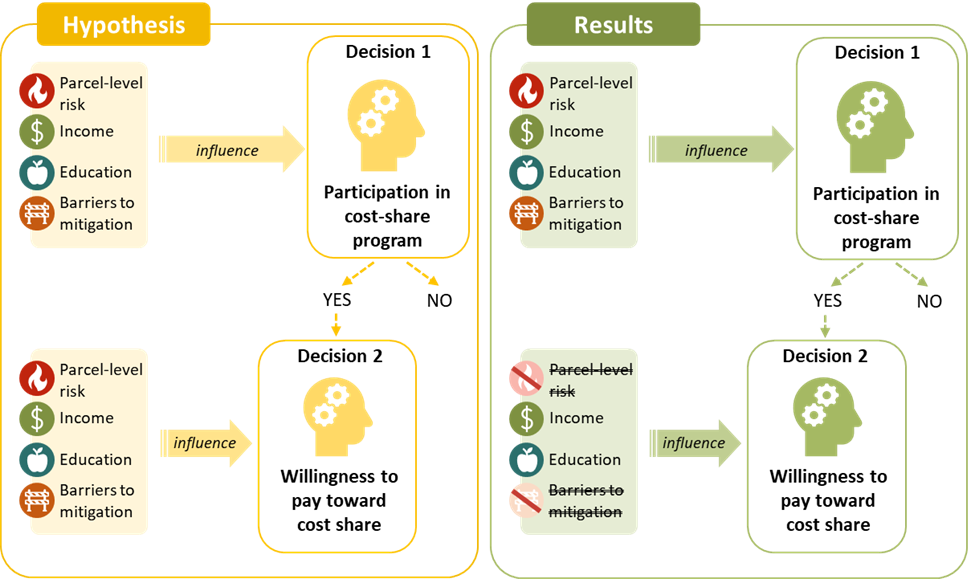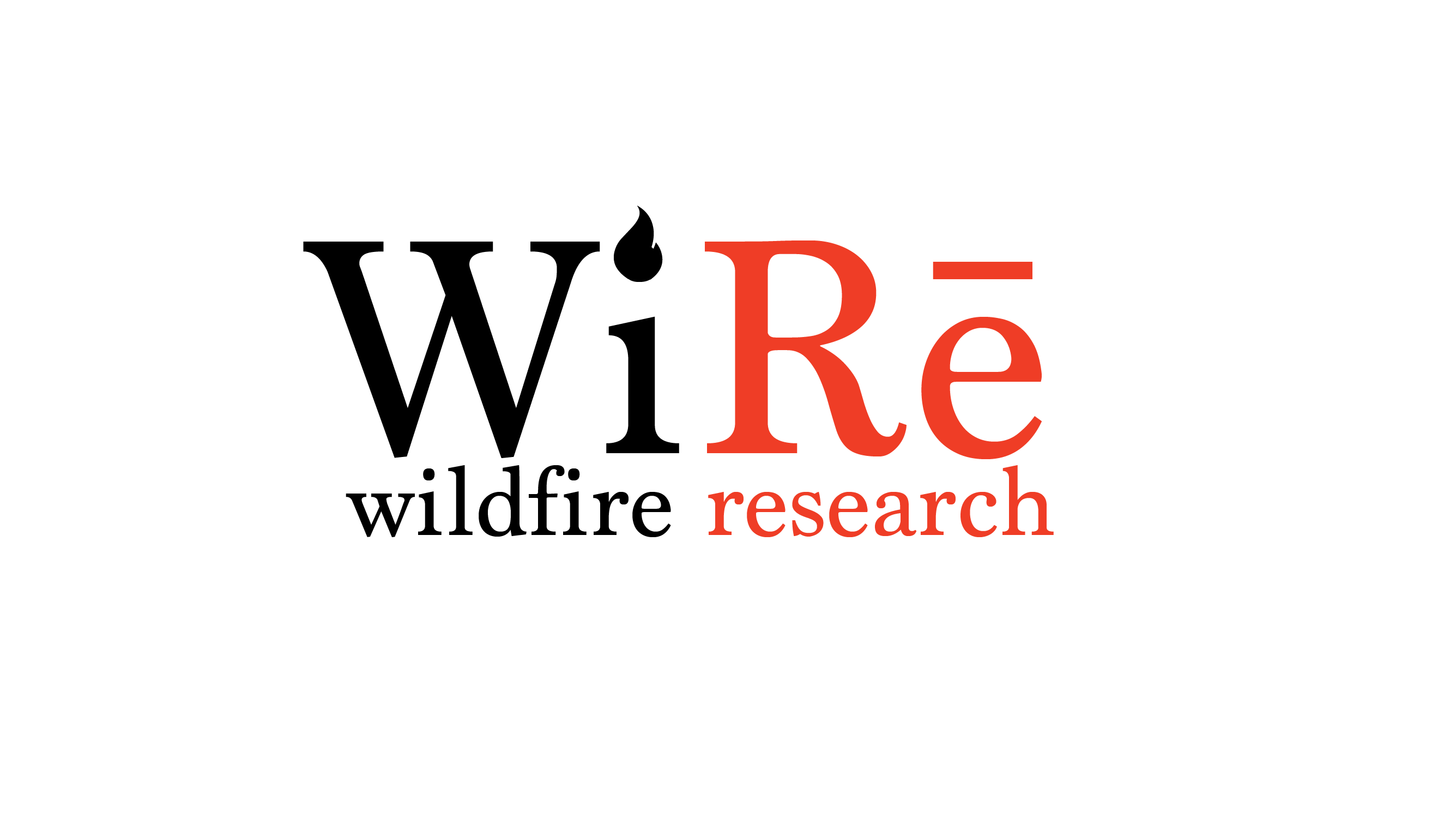James R. Meldrum, Patricia A. Champ, Hannah Brenkert-Smith, Christopher M. Barth, Abby E. McConnell, Carolyn Wagner, and Colleen Donovan
Wildfire mitigation efforts on private lands – for example, maintaining a defensible space around a person’s home – provide benefits to nearby neighbors, the community, and the public at large. By removing a portion of the financial expense, cost-share programs can encourage private landowners to reduce wildfire risk on their properties. In theory, cost shares make risk reduction accessible to all community members. Low-income households may have the most to gain from such programs, as they have the greatest financial need and tend to be the most vulnerable to wildfire hazards. However, is this financial incentive enough to increase mitigation among low-income households?
Researchers of a recent study took a closer look at factors that influence participation in wildfire risk mitigation cost-share programs for private landowners. In 2017, researchers worked with local wildfire councils to conduct household surveys and parcel-level risk assessments across several fire-prone communities in Colorado. They asked residents of these communities 1) if they would be willing to participate in a cost share program, and if so, then 2) how much would they be willing to pay to participate? The researchers found that lower-income participants were less likely to participate in a cost share program. Residents on parcels with higher risk were more likely to participate, but risk level does not influence how much they are willing to pay to participate. Finally, some but not all perceived barriers to mitigation practices affected respondents’ willingness to participate in a program (Figure 1).
A key takeaway from this study is that there may be equity issues with cost-share programs that cannot be addressed with additional financial resources alone. Because lower-income households were less likely to participate in cost-share programs, an unintended result of cost-share programs might be the disproportional support of mitigation by households with higher incomes versus lower incomes. The results also highlight the importance of considering equity not only between communities but also within them, as the income effect was found at the individual household level. Future research could identify why lower-income households were less likely to participate in cost-share programs, thus potentially helping to improve such programs’ ability to meet the needs of all households.
Figure 1. A graphic summary of Meldrum et al.’s (2024) study. The left half (in yellow) shows the factors predicated to influence residents’ (1) decisions to participate in cost-share programs and (2) how much participants would be willing to pay toward cost-shares. The right half (in green) depicts which of these factors indeed influenced their decisions.

To read the full 2023 publication from Ecological Economics, click here.
